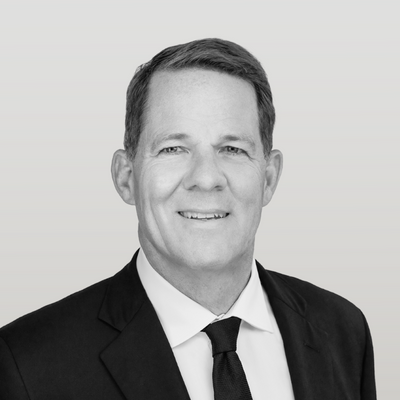401(k) Plan Advisor
Top 9 Ways Employers Can Use Retirement Plan Design to Maximize Benefits
A 401(k) plan is a retirement savings plan that allows employees to contribute a portion of their salary into a tax-deferred account. Many employers offer 401(k) plans as a benefit to their employees, but these plans can also maximize retirement benefits for owners and executives.
Retirement planning is an essential part of an individual's financial life. For business owners and executives, the stakes are even higher, given the potential impact on their income and lifestyle during retirement. They often earn higher salaries and may have different goals for their retirement savings than other employees.
Plan design is a crucial aspect of retirement planning for all participants. The right plan design can provide a wide range of benefits, including increased tax savings, greater flexibility, fewer compliance issues, higher saving rates, and higher employee participation rates.
Here are nine strategies for using retirement plan design to maximize retirement plan benefits for owners, executives, and participants:
- Implement a profit-sharing plan using the new comparability profit sharing allocation formula: A profit-sharing plan allows employers to contribute a percentage of their profits to their employees' retirement accounts. This can be a valuable benefit for owners and executives, who may contribute a larger percentage of their income to the plan than other employees. Employers can reward key employees based on performance with profit-sharing plans, which can help retain top talent.
a. The employer contributes to the plan on behalf of eligible employees, typically as a percentage of eligible compensation. Profit sharing contributions are discretionary and can vary from year to year.
b. For business owners and executives, profit sharing contributions can be a valuable way to boost retirement savings while minimizing tax liability.
c. In 2023, the total 401(k) employer and employee annual contribution limit (401(k) and profit sharing) is $66,000 ($73,500 if over age 50 and using catch up contributions). - Consider a safe harbor 401(k) plan: The IRS requirements for a safe harbor 401(k) plan can help employers avoid nondiscrimination testing and other administrative burdens. This type of plan can be especially valuable for employers with highly compensated employees, as it ensures that all employees can contribute to the plan and receive the same employer contributions. This can help owners and executives maximize their retirement savings without running afoul of IRS regulations. To qualify as a safe harbor, the employer must make certain contributions to the plan on behalf of employees. The safe harbor contribution options include:
a. Non-elective contributions: The employer contributes to the plan on behalf of all eligible employees, regardless of whether the employee makes their own contributions. The contribution must be at least 3% of eligible compensation.
b. Matching contributions: The employer matches a portion of the employee's contribution up to a specified limit. The most common matching formula is 100% of the first 3% of eligible compensation contributed by the employee, and 50% of the next 2% of eligible compensation. - Matching Contributions: Offering matching contributions is another effective way to encourage employee participation in retirement plans. In certain circumstances, matching contributions may be eligible for tax credits, helping to offset the cost.
a. Employers can match a percentage of their employees' contributions up to a certain amount. This strategy motivates employees to contribute to the plan and provides them with additional retirement savings.
b. The matching contributions are deductible as a business expense, reducing the employer's taxable income.
c. Offer a stretch match. Instead of matching 100% on the first 4% of pay, a plan sponsor might match 50% of the first 8% of your pay rather than matching 100% of the first 4% of your pay. This is done so employees will put more in their accounts. This strategy is called "stretching the match." - Roth Option: Many retirement plans enable employees to make after-tax contributions that can be withdrawn tax-free in retirement through a Roth option.
a. The Roth option can be an attractive option for younger employees who expect to be in a higher tax bracket in retirement. A Roth 401(k) enables employees to contribute after-tax dollars to their retirement account. Owners and executives may also benefit from a Roth 401(k) option, as they can use it to diversify their tax exposure in retirement. This can be especially valuable for high-income earners who may be subject to higher tax rates in retirement.
b. Additionally, high-income earners who are not eligible to contribute to a Roth IRA because of income limitations can still make after-tax contributions to a Roth 401(k). - Allow for in-service distributions: In-service distributions allow employees to withdraw funds from their retirement account while still employed. This can be a valuable benefit for owners and executives, who may have other investment opportunities that are not available within a 401(k) plan. By allowing for in-service distributions, employers can help their key/non-key employees access their retirement savings when they need it, while still benefiting from tax-deferred growth.
- Automatic Enrollment:
a. One of the most effective ways to increase employee participation rates is through automatic enrollment. With automatic enrollment, employees are automatically enrolled in the retirement plan unless they opt-out. This strategy helps to ensure that more employees are saving for their future and benefiting from employer-sponsored retirement plans.
b. Auto Enrollment may help plans that have corrective distribution and compliance testing issues.
c. Employees who do not want to participate may opt-out of auto enrollment. - Automatic Escalation:
a. Automatic escalation is designed to increase an employee’s contribution rate to their 401(k) plan periodically. For example, if an employer sets the automatic escalation rate at 1% a year, every year an employee’s contribution rate will increase by 1% until it reaches a maximum contribution of at least 10% but not over 15%.
b. Auto Escalation may help plans that have corrective distribution and compliance testing issues.
c. Employees who do not want to participate may opt-out of auto increase. - Vesting Schedules: Vesting schedules determine when employees fully own the employer contributions they have received. Different types of employer contributions can be subject to different vesting schedules. Gradual vesting schedules are designed to encourage employee retention by rewarding employees for their loyalty and tenure with the company. Immediate vesting schedules make the plan more attractive for employee recruiting.
- Eligibility Schedules:
a. Consider shorter eligibility schedules to allow for new employees to start contributing and saving at an earlier time.
b. Shorter eligibility schedules (less than six months) are also important when recruiting new employees.
c. For industries or companies that have high turnover, a longer eligibility is recommended.
In addition to the above, other non-design features may help maximize tax savings, lower costs and improve retirement readiness. These include:
- Monitoring plan fees and expenses:
a. By monitoring plan fees and expenses, employers can ensure that employees are not paying excessive fees that erode their retirement savings. This can include negotiating lower fees with investment providers or switching to lower-cost investment options.
b. The plan sponsor may decide to pay for plan expenses, such as advisory and/or administration costs. This has three advantages:
i. Tax deductibility – Retirement plan service provider fees are tax deductible, which could equate to the company paying approximately $.60 on the dollar for plan services.
ii. Accelerated Participant Account Growth – All participant accounts, regardless of balances, will grow and compound at a faster rate as they are not having fees debited from their account. This also helps support participant retirement readiness initiatives and the attraction/retention of employees.
iii. Fee Liability Mitigation – There have been many court cases in recent years concerning excessive fees being paid by plan assets and participants. If the plan sponsor is paying the majority of the plan fees, this becomes a moot point. - Take advantage of catch-up contributions: The IRS sets annual contribution limits for 401(k) plans, but all employees can take advantage of additional catch-up contributions if they are over age 50. By contributing the maximum amount allowed by law, participants can maximize their retirement savings and reduce their taxable income. For 2023, the maximum employee contribution to a 401(k) plan is $22,500, with an additional catch-up contribution of $7,500 for individuals aged 50 and over. The employer can also contribute up to 25% of eligible compensation, with a maximum contribution limit of $66,000.
- Provide additional financial resources: Owners and executives may have more complex investment needs than other employees. Employers can help their key employees and participants make informed decisions about their retirement savings by offering access to financial planners or investment advisors, as well as educational resources like seminars or webinars.



